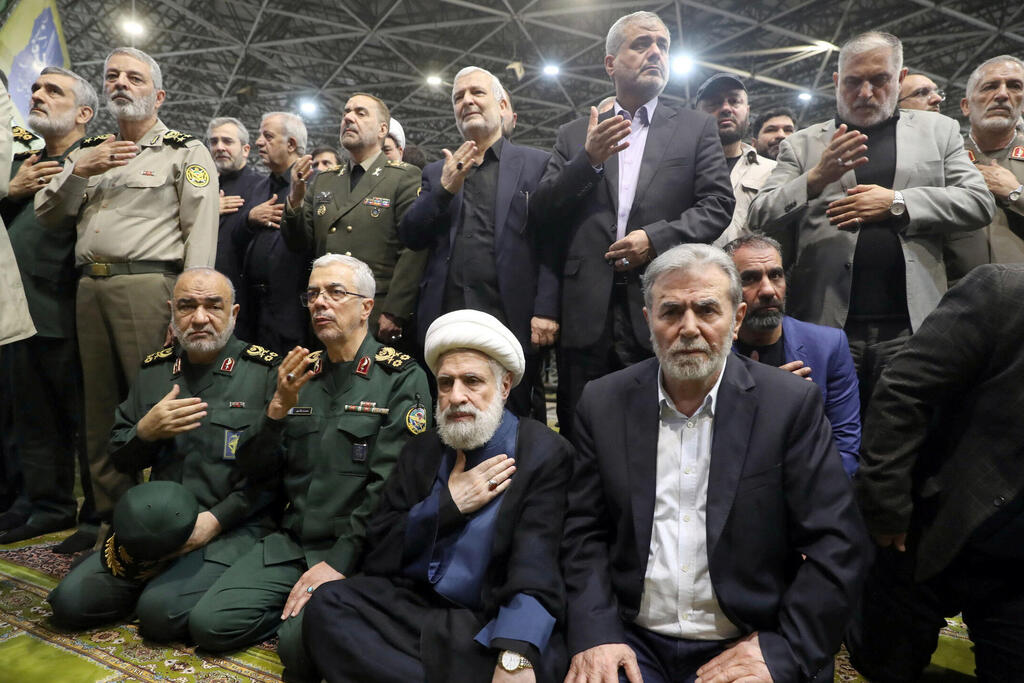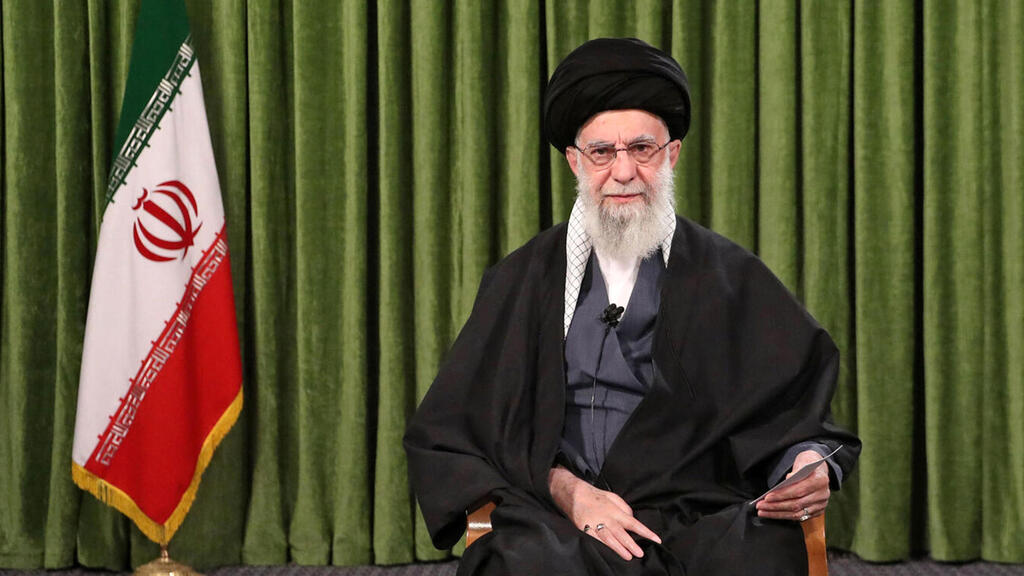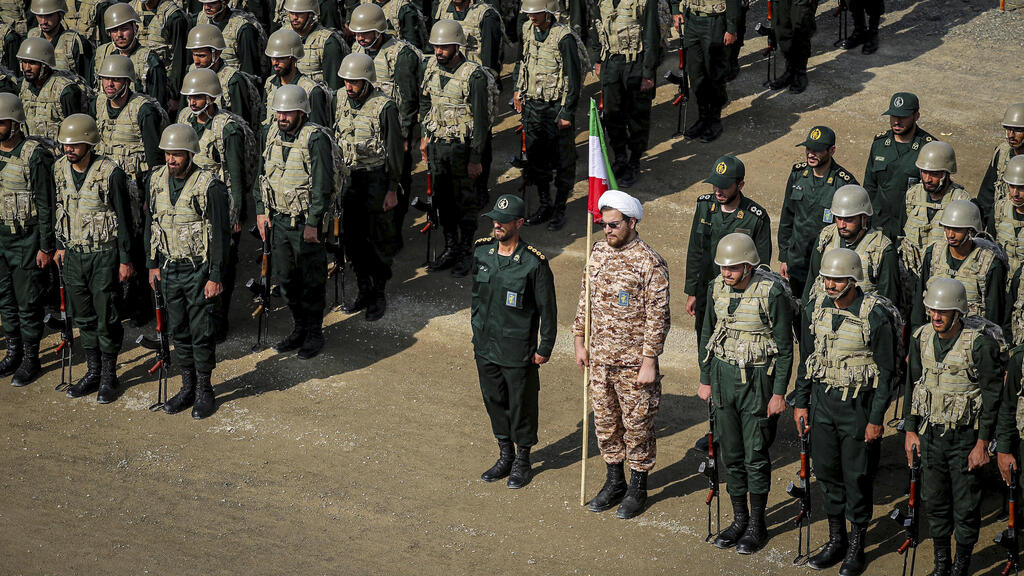Getting your Trinity Audio player ready...
The West has got to revise its thinking. It needs to begin threatening Iran militarily and even take active measures in that direction if it wants to change the course of Iran’s modus operandi - its progress toward nuclear capability and its sponsoring of terrorism worldwide.
Background
Ever since the Islamic Revolution in 1979, Iran has been transformed. From a friend of Israel, cooperating in a variety of fields and aligned with the United States, Iran has set its sights on exporting its Islamic Revolution and on opening a front against the West. One example of this is the establishment of the Revolutionary Guards, whose mission is to export the revolution to various countries and its well-known slogan: “The United States is the Great Satan and Israel is the Little Satan.”
4 View gallery


Nuclear centrifuges at Natanz: Iran built a military nuclear program on the foundations of the civilian nuclear program
(Photo: EPA)
Concurrent with its support for terrorism, Iran also built a military nuclear program on the foundations of the civilian nuclear program that had been started during the pre-revolution years. While Iran’s first revolutionary leader Ayatollah Ruhollah Khomeini was in charge, the military nuclear program remained mothballed since he believed it was inconsistent with Islam. However, after he died in 1989, the plan was revived despite Iran’s claims that it was not working to achieve nuclear military capability. They insisted their program was purely focused on energy production.
As a result, the United States decided to impose sanctions on Iran. The first sanctions were imposed in November 1979, following the U.S. embassy hostage crisis in Tehran. These sanctions were lifted in January 1981 following the release of the hostages, only to be reimposed in 1987 in response to Iran’s support for terrorism and the steps it took against maritime traffic in the Persian Gulf. Ever since then, the United States has persisted with its sanctions against Iran under successive administrations and under several laws and presidential decrees.
Besides the sanctions imposed on Iran by the United States, the UN Security Council passed several resolutions calling on Iran to suspend its nuclear-related activities. The first such resolution was 1696. The Security Council has imposed and upheld sanctions against Iran in an effort to thwart its nuclear-related activities.
However, in 2015, the world superpowers signed an agreement with Iran, in which Iran committed to slowing down its nuclear activities in exchange for a lifting of most of the sanctions that had been imposed on it - both the U.S. sanctions and the UN sanctions.
4 View gallery


Iranian leaders at the funeral of Ismail Haniyeh in Tehran
(Photo: Office of the Iranian Supreme Leader/WANA (West Asia News Agency) Handout via REUTERS)
In May 2018, after having criticized the nuclear deal during his presidential election campaign, U.S. President Donald Trump withdrew from the nuclear deal, reinstated the American sanctions on Iran and further extended the American sanction regime against the Iranian State and various Iranian institutions, corporations and individuals. This sanction regime was extensive and plunged Iran into a deep economic crisis. With Joe Biden’s accession to the U.S. presidency, the enforcement of the American sanctions was slightly relaxed (although the legal framework remained virtually unchanged).
In addition, throughout all those years the world powers kept up their diplomatic pressure on Iran through media statements that Iran must discontinue its nuclear program and also its regional activities, through the passage of resolutions in the international organizations and by calling on Iran to cease its nuclear activities. For example, in September 2003, the Council of Commissioners of the International Atomic Energy Agency (IAEA) passed a resolution calling on Iran to cease all its uranium enrichment activities. Over the years the Agency adopted further resolutions along the same lines.
What is being done at present against Iran’s activities
The Swords of Iron War has put Iran’s support of the various terrorist organizations in the Middle East (Hamas, Hezbollah, the Houthis, Shiite militias in Iraq) under the spotlight and on its intention to destroy Israel and eliminate the perceived threat it poses. This goal of theirs was actively pursued in the Iranian attack against Israel on April 13, 2024, in which Iran launched hundreds of UAVs, cruise missiles and ballistic missiles toward Israel. At the same time Iran is continuing with its nuclear program, and the “snapback” deadline (the possibility of reinstating the sanctions against Iran, in the event it is decided that it was violating its part in the deal) is approaching.
In order to stop Iran’s nuclear activities, the West has to change its methods. Currently, the West’s measures against Iran follow two channels: sanctions and diplomatic pressure on Iran. However in recent years, these measures have proven inadequate for dissuading Iran to desist from its hostile activities - none of the measures have been able to alter its course, particularly while China and Russia are not cooperating with the West and maintaining economic ties with Iran.
For the Iranian regime, the paramount principle is to ensure its own survival. This is the basis for all other matters. The Iranian moves are all played out under a rationale of long-term regime continuity. All its moves are measured against this yardstick. For this reason, the West’s modus operandi should have one aim - to undermine the Iranian regime’s resiliency in such a way as to force it to alter its behavior, withdraw from its nuclear program and discontinue its funding of the Middle Eastern terrorist organizations, which are sowing chaos and evil indiscriminately. The West has got to turn the equation on its head and create an inverse relationship, rather than a direct relationship, between the nuclear program and the regime’s survival.
The main means of undermining its sense of resiliency is through a tangible military threat, which will make it unmistakably clear to Iran that if it does not change its ways, they are risking widespread military attacks by the West, which will weaken the State institutions and put the future of the Ayatollahs’ rule in grave danger. This military threat does not necessarily mean pulling out the heavy guns right from the start. For example, the West could take measures such as blocking the Strait of Hormuz, through which virtually all Iranian goods are exported - mainly oil and its byproducts. Such a blockade will also impact Iranian ability to import goods.
Needless to say, such measures could lead to an all-out war throughout the Middle East, but the current circumstances in the Middle East call for drastic measures. After all, if Iran persists along its current trajectory this might provoke Israel, the moderate Sunni countries and other countries like Saudi Arabia into a much more destructive battle against the forces of terrorism and evil throughout the Middle East, chief among them Iran and the terrorist organizations it supports.
Such measures must be imposed with a clearly understandable goal – to make it clear to the Iranian ruler and his regime that the current equation cannot stand any longer. Iran cannot persist in linking its survival to its progress with its nuclear program and to its propagation of Islamic terrorism in all directions. Their leader will be forced to choose whether he accepts the new equation, under which he is free to operate within Iranian borders, or whether he is willing to risk a fight at the end of which he, and the entire Shiite regime in Iran, will be deposed.
For this to happen, the West must realize that the wars of the present day must be fought now and not sometime in the future. Iran and the Shiite Axis must be dealt with firmly, using all force necessary. In the absence of this, the Western powers will be faced with a very different reality - a nuclear Iran, terrorist organizations capable of doing Iran’s bidding, bereft of allies in the Middle East and threatened with Islamic extremism at home.
- Shachar Citron is a researcher at the Israel Defense And Security Forum and an analyst within a company specializing in the capital market; he is a graduate of the IDF's “Special Research Center – Shehakim" program




